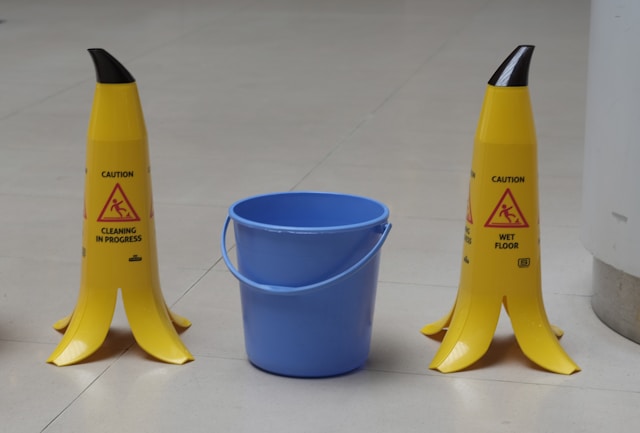Every year, over 211,000 work-related slip and fall injuries lead to at least one missed workday, as reported by the National Safety Council. Shockingly, an average of 42,000 falls occur annually, emphasizing the critical need for workplace safety. These statistics underscore the importance of addressing and preventing such incidents to ensure a secure and productive work environment for employees.
In Pearland, Texas, safeguarding against slip-and-fall accidents becomes crucial. For businesses and organizations, implementing proactive measures is key to addressing the specific challenges of the region. With a focus on slip and fall in Pearland, Texas, comprehensive safety training, well-lit workspaces, and immediate hazard response are essential strategies. Investing in high-traction flooring, clear signage, and regular maintenance further fortifies defenses. Prioritizing employee awareness and fostering a reporting culture creates a safety-centric environment.
Maintain Clean and Dry Floors
One of the most important steps employers can take is to keep floors clean, dry, and free from hazards that may cause slip-and-fall accidents. Regularly sweep and mop the floors, especially in high-traffic areas. Implement a spill response protocol so that any spills or wet surfaces are promptly attended to and properly dried.
Use Proper Signage
Place clear warning signs near areas where there might be potential slip hazards, such as wet or newly cleaned floors. These signs act as visual reminders for employees and visitors alike to exercise caution while walking through those areas.
Adequate Lighting
Insufficient lighting is another common factor contributing to slip-and-fall accidents. Ensure that all areas of your workplace are adequately lit in order to improve visibility for employees. Pay special attention to stairways, hallways, parking lots, and outdoor pathways.
Conduct Regular Inspections
Implement a system of routine inspections aimed at identifying potential safety hazards across your premises. This includes uneven flooring, loose or worn-out mats or rugs, potholes or cracks in walkways, or even exposed cables that may pose tripping hazards. Address these issues promptly once identified.
Provide Appropriate Footwear
Promote employee safety by requiring appropriate footwear in certain job roles or hazardous areas where slips are more likely to happen. Explore options like non-slip shoes with strong grip on possible slippery work surfaces. Establish a policy regarding footwear safety standards based on the specific needs of different job roles within the organization.
Employee Training
Investing in employee training programs will provide valuable knowledge and skills needed to prevent slip-and-fall incidents. Educate employees about safe walking techniques and tips for identifying hazards. Teach them proper cleaning protocols, emphasizing the importance of promptly addressing spills or wet surfaces.
Utilize Non-slip Surfaces
In areas prone to developing slippery surfaces, use non-slip materials or install anti-slip mats or paints. Take necessary measures like installing grip tapes or abrasive strips on stairs. Protect outdoor walkways with rubber covers, especially during rain or winter months when snow and ice may become a problem.
Clear Walkways and Clutter
Maintain well-organized walkways that are free from cluttered pathways, loose cables, or objects that may obstruct an employee’s path. Regularly check and remove any obstacles that could potentially cause someone to trip and fall while walking around the workplace.
Encourage Open Communication
Create an open culture where employees feel comfortable reporting potential hazards or safety concerns. As they are the ones directly working in various parts of the facility, they’re more likely to identify issues others might overlook. Encourage each team member to actively contribute to maintaining a safe and efficient work environment by reporting hazards promptly.
Regular Maintenance of Outdoor Areas
It’s essential to extend slip-and-fall prevention measures not only inside but also outside the workplace premises. During inclement weather conditions, outdoor pathways, parking lots, and entryways may become hazardous due to rain, snow, or ice. Regularly maintain these areas by clearing debris, removing ice buildup, sanding, or salting walkways when necessary.
Conclusion
Preventing slip-and-fall accidents requires a comprehensive approach involving regular maintenance routines, appropriate signage, employee training programs, and vigilant inspections. These proactive measures not only reduce workplace injuries but also create a sense of trust among employees that their safety is prioritized. Proactively managing slip-and-fall risks leads to a safer workplace for everyone involved.







